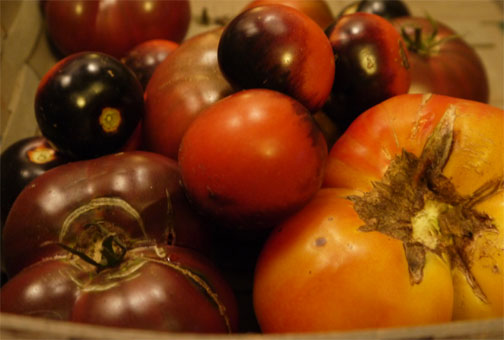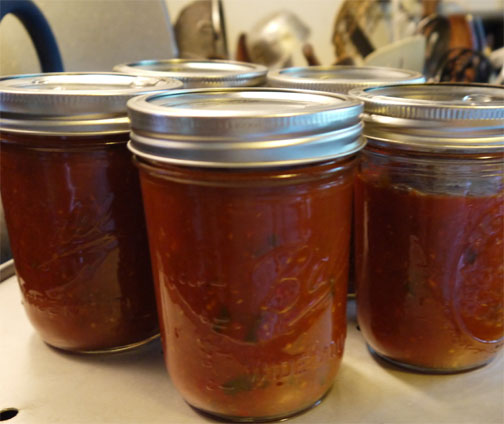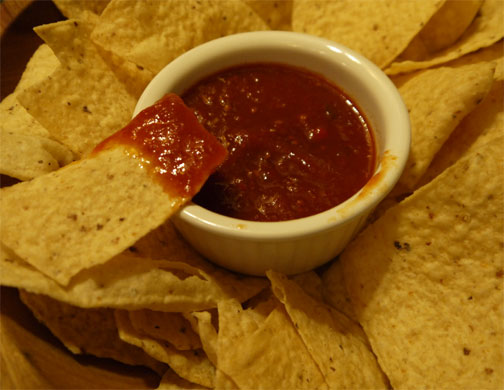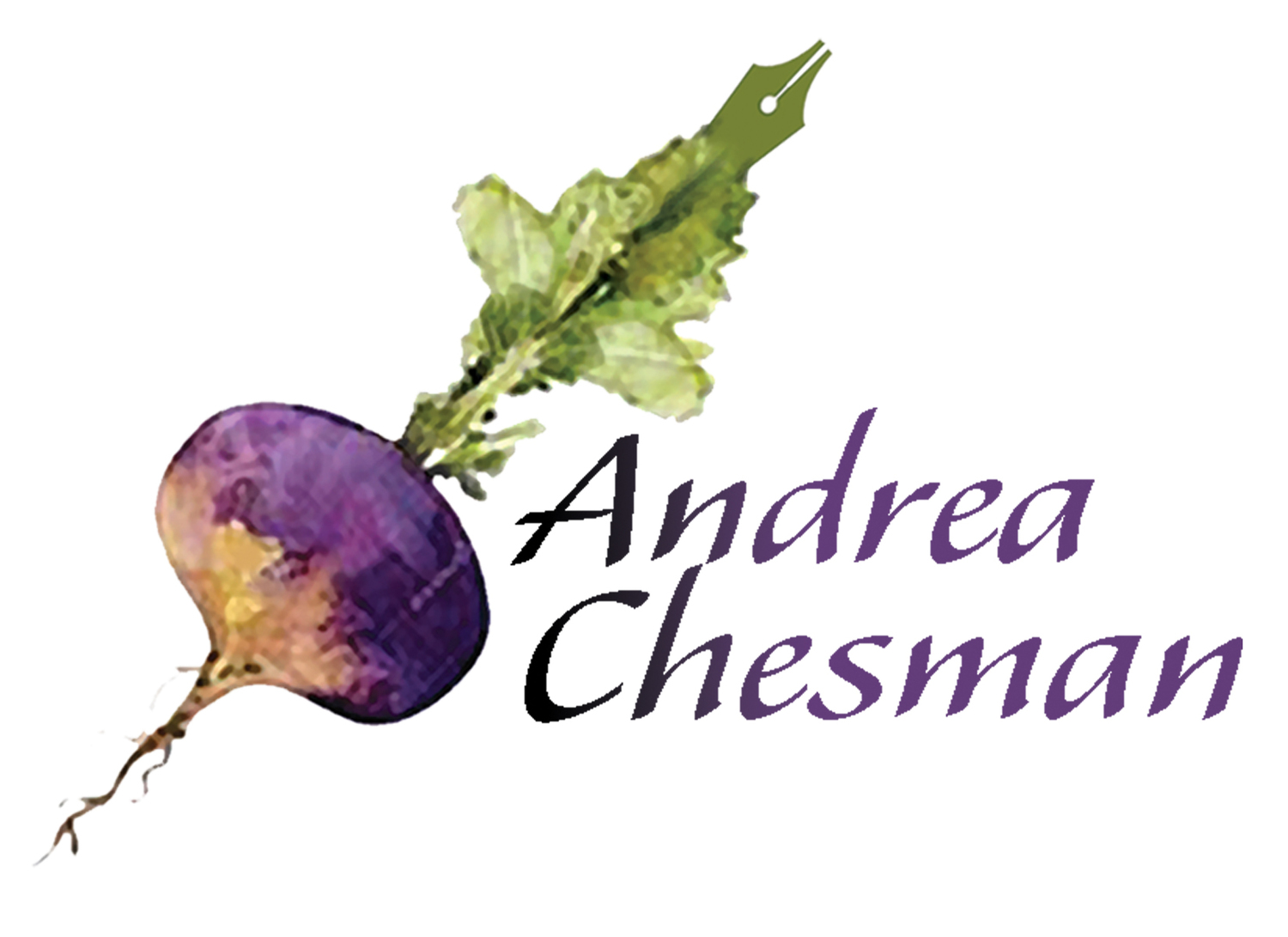Our tomato crop is abundant. While others around us have had diminished yields due to blight and drought, our garden has never been better. And it has never been better tended. My son dug new beds this year, added plenty of compost and manure, and tested and balanced the soil nutrients and pH. He watered faithfully til the plants started to fruit. It all paid off.
 Tomatoes!
Tomatoes!
A few of the rosy-blushed, yellow pineapple tomatoes have weighed in at more than two pounds. And are virtually seedless. What an amazing tomato!
We have Black Cherries, Red Currant Tomatoes, Sungolds, and Super-Sweet One-Hundreds. We have Yellow Taxies and Purple Cherokees, Indigo Rose, Nyagous, Roma, Black Crim, and Amish Paste. And we have plenty of Anaheim chiles. Obviously, it is time to make salsa.
And more salsa.
 Chipotle Salsa
Chipotle Salsa
But back to those tomatoes: Here’s a partial report.
As always, the cherries were earliest and continue to produce. The Black Cherries have a very interesting, very rich flavor – very umami one might say. They are big – a two-bite cherry. Sungolds and Super-Sweet Hundreds – classic, super-sweet, great snacking tomatoes, very prolific. Red Currants – need to be fully ripe for full flavor, really pretty in some salads, but just not worth the labor to harvest, though amazingly prolific.
Yellow taxi was early. That is the strongest praise I can give this otherwise low-acid, low-flavor tomato.
Can’t tell the Amish Paste from the Romas. A paste is a paste is a paste – but always good, especially for cooking and canning.
The Nyagous, another “black tomato” also has that umami, that mysterious rich flavor. The Indigo Rose tomato did not win my heart. It is fully black when unripe, then goes to green, then red. It spends too much effort on changing color, not enough on developing flavor. We won’t plant it again.
There comes a point in the tomato harvest when we are doing less tasting and comparing varieties and more thinking about how and when to preserve. That’s where I am right now. Since I am doing a lot of demos and classes on making pickles, mostly I am throwing the tomatoes into bags and freezing – to be cooked into salsas and sauces when I have the time.
Here’s a favorite canned salsa recipe. It’s from The Pickled Pantry, and I’ll be taking it to some of my tastings and demos. It has been a house favorite for years! I made more today.
 Salsa and chips
Salsa and chips
Chipotle SalsaMakes 4 to 6 pints
Chipotle chiles (smoke-dried jalapenos) add a lick of fire to this otherwise simple salsa.
24 cups quartered ripe tomatoes8 garlic cloves, peeled and left whole2 to 4 chipotle chiles2 cups distilled white vinegar2 onions, finely minced1 cup finely minced fresh green chiles1 cup finely minced sweet bell pepperSalt
1. Combine the tomatoes, white vinegar, and chipotles in a large saucepan and bring to a boil. Reduce the heat and simmer until the tomatoes are very soft, stirring occasionally, about 45 minutes.
2. Process the tomato mixture through a food mill, discarding the seeds and skins.
3. Return the strained mixture to the saucepan and add the onions, fresh chiles, and bell pepper. Boil gently until the salsa has reduced to a nice thick sauce, 1 to 2 hours. Season to taste with salt.
4. Ladle the hot salsa into clean hot pint jars, leaving 1/2-inch headspace. Remove any air bubbles and seal.
5. Process in a boiling water bath for 15 minutes, according to the directions for canning on page 000. Let cool undisturbed for 12 hours. Store in a cool dry place.
Kitchen Notes
* For a milder salsa, remove the seeds of the chipotle and fresh chiles before adding to the salsa.
* Your yield will vary depending on the juiciness of the tomatoes. Plum tomatoes tend to yield more than salad tomatoes because they have a higher flesh to juice ratio.
Recipe adapted from The Pickled Pantry by Andrea Chesman. ©2012 Andrea Chesman. All rights reserved.

